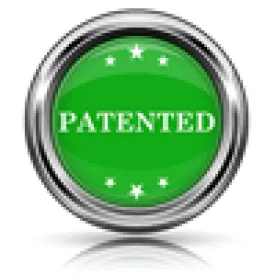Takeaway: The Board may terminate a trial based on a Request for Adverse Judgment without delay, even where termination may prevent a subsequently filed IPR by the Petitioner from being joined and thus rendering that subsequent IPR statutorily barred.
In its Order, the Board granted Patent Owner’s Request for Adverse Judgment in regard to claims 1-5 and 8 of the ’501 patent. The Board thus concluded that claims 1-5 and 8 of the ’501 patent are not patentable, and indicated that a certificate canceling these claims would issue in due course.
Petitioner had sought inter partes review of claims 1-20 of the ’501 patent, but the Board had only instituted review of claims 1-5 and 8. Patent Owner had then requested adverse judgment as to the claims – i.e., claims 1-5 and 8 – for which inter partes review had been instituted.
Petitioner had then sought – via a conference call between the parties – a delay in granting the Request for Adverse Judgment. In particular, Petitioner asked that the Request for Adverse Judgment not be granted “until a decision on institution is rendered in the Petition filed and designated as IPR2015-00582 . . . and its associated motion for joinder.” As characterized by the Board, “Petitioner’s later Petition would otherwise be time barred if it could not be joined to a preexisting inter partes review.” The Board ended up granting Patent Owner’s Request for Adverse Judgment without Petitioner’s requested delay.
In conducting its analysis, the Board at first indicated that “[o]n its face, the request is sufficient to grant relief to the Patent Owner.” But the Board then endeavored to answer its own question: “why should we not grant the relief in a timely fashion?”
Petitioner took the position that “the procedural posture of Cases IPR2014-01053 and IPR2015-00582 should be considered along with the District Court litigation and the intent of the America Invents Act statute to provide an alternative to litigation.” The Board, in turn, noted that “if there is no ongoing inter partes review for the IPR2015-00582 petition to be joined to, regardless of whether the petition has merit, the petition is statutorily barred as it was filed January 20, 2015, which is more than one year after the date of service of [the July 11, 2013] complaint upon the Petitioner.”
It was Petitioner’s view that it would be prejudiced if it was forced to resume with the pending litigation because the litigation could possibly be resolved by the second-filed inter partes petition (especially when it is considered that Patent Owner had already canceled the above-identified four claims). Patent Owner countered “that the stay in the copending litigation had already been lifted, and the filing of multiple inter partes review proceedings was solely to delay the district court proceedings.”
The Board then looked to the underlying litigation, noting that the stay of the District Court proceeding “was to remain in place pending the decision on reconsideration.” Thus, while Patent Owner was correct in asserting that the District Court proceeding had resumed, the Board went on to note that “no significant activity beyond the filing of a motion relating to a discovery plan has occurred.”
The Board stated that “the burden to show why the decision on the request for adverse judgment should be delayed into at least mid-May 2015 (which is when a Patent Owner’s response could latest be filed) is upon the Petitioner.” In weighing the circumstances that tended to support Petitioner’s position, the Board recognized “the procedural problem with the later Petition having nothing to join to and therefore being statutorily barred” and reiterated its awareness of Petitioner possibly having to appear in District Court again. In weighing the circumstances that tended to support Patent Owner, the Board observed that Petitioner had already had an opportunity for inter partes review, but had not succeeded; and that there was no guarantee that the second petition would succeed on the merits or that the District Court would stay the proceeding a second time. The Board also noted Patent Owner’s view that these various proceedings had been “filed solely as a delay tactic.”
In the end, the Board reiterated that there were factors supporting both the grant and the denial of the request to delay the entry of adverse judgment. After taking all of these factors into account, the Board found that “Petitioner [had not shown that the weight of the factors in this particular case favors the grant of the request to delay the decision on the Request for Adverse Judgment.”
Artsana USA, Inc. v. Kolcraft Enterprises, Inc., IPR2014-01053
Paper 24: Judgment on Termination of the Proceeding
Dated: April 3, 2015
Patent: 8,388,501 B2
Before: James T. Moore, Hyun J. Jung, and Barry L. Grossman
Written by: Moore
Related Proceedings: Kolcraft Enterprises, Inc. v. Artsana USA, Inc., No. 1:13-cv-04863 (N.D. Ill.); IPR2014-01053; and IPR2015-00582



 />i
/>i
